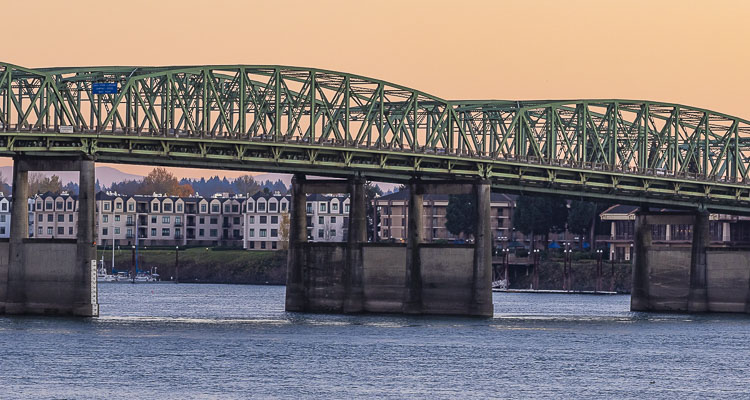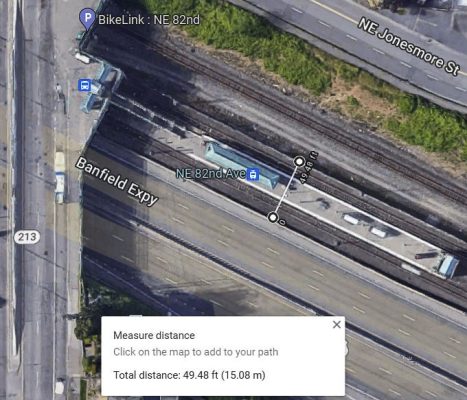
Camas resident Margaret Tweet offers her thoughts on the I-5 Bridge replacement project in advance of the Clark County Council’s consideration of priorities
Margaret Tweet
In November 2012, Clark County voters REJECTED the C-TRAN ballot proposition to raise the sales tax to extend Oregon’s TriMet Max light rail into Clark County. Every city in Clark County rejected the C-TRAN Proposition, as did limited county-area residents permitted to vote.

A 2013 Vancouver city petition asked for a public vote on the use of city resources to pay for light rail. The Clark County Elections Department struck down the first signature AND any duplicates, canceling 606 signatures, leaving the petition short just 32 signatures.
Undeterred, 75 citizens filed suit against defendants Clark County Auditor Greg Kimsey and Clark County in Cowlitz County Superior Court. On April 17, 2013 the judge ruled in favor of citizens, the original signatures total was updated to 6,046, and the petition was certified. Citizens presented the petition asking for a vote on light rail to the Vancouver City Council, which ignored the people and voted 5-2 not to put the light rail question on the ballot.
In November 2013, Clark County councilors placed an advisory vote on the ballot to oppose any light rail project in Clark County unless it is first supported by a majority of the voters in a county-wide advisory vote of the people. Over 68 percent of voters approved the measure. No county-wide advisory vote on light rail has been held since then.
Today, the Interstate Bridge Replacement (IBR) group insists that Clark County must accept Oregon’s costly MAX light rail on any I-5 replacement bridge. However, light rail is not required on a replacement bridge or tunnel at all. The I-5 replacement bridge is the biggest transportation project in the region in decades.
C-TRAN Express buses and Vanpool, currently serve both Washington and Oregon residents who are cross-river commuters. Oregon’s TriMet doesn’t offer cross-river public transit service. Instead, C-TRAN alone pays millions of dollars for transport over the Columbia River.
Buses or vans can be sized to meet changing demand, share a lane with other vehicles, and maximize limited transportation real estate and funds. Light rail runs on expensive fixed tracks on the ground that have been flooded by rain. Electrified cables above overheat in summer, and freeze in winter, stopping the trains. Buses are then called to rescue light rail passengers.
When the Oregon Columbia River Crossing oversight committee met in Oregon in 2011, they asked about the bus alternative instead of light rail.
“CRC Deputy Director Kris Strickler said cost was a driving force behind presenting five different alternatives in the DEIS, some of which offered bus rapid transit instead of light rail.
“At that time, cost was a factor,” Strickler said. “It was a driver in the discussion.”
See Oregon lawmakers say CRC project may be too expensive Issues, 2011
IBR early cost estimates for light rail of $1.4 billion, out of an estimated $4.8 billion I-5 Bridge replacement costs, were recently disclosed. Since only 1.7 percent of trips across the I-5 bridge utilize public transit, the price-tag seems outrageous.

IBR claims transit ridership is going to grow dramatically, yet C-TRAN ridership has steadily decreased, and the trend of working remotely continues. Past forecasts based on unexplained modeling assumptions haven’t materialized.
See Is the IBR setting up another transit failure?
How much land will the interstate bridge replacement remove from I-5 for transit? Express Bus (40-foot bus) or Bus Rapid Transit (60-foot articulated bus) can use a 12-foot-wide freeway lane on both the bridge and on I-5. Transportation architect Kevin Peterson has pointed out that one vehicle lane can handle about 1,800 vehicles an hour. If so, transit buses and vans could easily travel in a traffic lane, alongside other vehicles and occupy at most 10 percent of the vehicle capacity one lane provides. Why not allow other vehicles to use that lane when buses are not present?
Light rail demands three times or more space than a vehicle lane, and does not share with other vehicles.
“The amount of land required for side-by-side MAX light rail tracks varies. It appears to require 36 to 40 feet for non-station property. But at stations where people need a platform to board, it can be 50 feet or more in width. This graphic shows the 82nd Ave. MAX station in Portland on the north side of I-84.’’

High Tolls will be charged on both the I-5 Bridge and the I-205 bridges. For the 520 Bridge between the Eastside and Seattle, the toll rates are already set to increase by 15 percent in 2023. For a 6-Axle freight vehicle, the current one-way toll between 11 a.m. and 6 p.m. is $13.95 pay by mail.
On Tuesday July 19, 2022, the Clark County Council will consider a resolution on Clark County priorities for an I-5 Replacement Bridge. Citizen input on the resolution is allowed during public comment at the beginning of the 6 p.m. meeting, and/or written comments may be submitted.
Also read:
- Opinion: Hiding the growing cost of the Interstate Bridge replacementJoe Cortright of the City Observatory addresses the rising cost of the Interstate 5 Bridge replacement project.
- 90 minutes of delay on Southbound I-5 in Southwest Washington on Friday afternoon, July 26Travelers using southbound Interstate 5 through Woodland should expect up to 90 minutes of delay during Friday afternoon and evening and should delay travel or prepare for additional travel time.
- Nighttime paving work on I-5 and SR 14 in Clark County July 28-Aug. 9Nighttime travelers in Clark County should expect delays for maintenance and paving work beginning Sunday, July 28 until the morning of Friday, Aug. 9.
- Northeast 182nd Avenue/Northeast Ward Road to be closed on Aug. 1Northeast 182nd Avenue and Northeast 172nd Avenue in Clark County will have single-day closures on August 1 and August 5 for road preservation, with detours in place.
- Interstate Bridge Replacement program awarded $1.499 billion FHWA Bridge Investment Program grantInterstate Bridge Replacement program officials have shared that the program received $1.499 billion through the Federal Highway Administration’s Bridge Investment Program.









